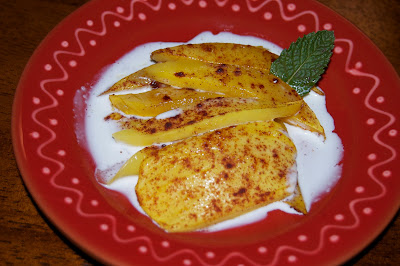Having traveled to Honduras a few years ago, my friend Carolyn was eager to revisit its cuisine and relive her adventures in Central America. So I got together with her to sample some Honduran specialties at El Katracho in Sherman Oaks. She got a kick out of combing over the menu and recalling where she’d gone there and which foods were familiar to her.
Unordered but welcomed as a starter while we awaited our meal was a basket of catrachitas (oops! didn’t get a photo), thick corn tortilla chips drizzled with a house made salsa and sprinkled with a bit of fresh queso. This is not your everyday chips and salsa–these chips are denser, and this salsa richer than what I’ve had before. We savored them rather than shoveling them in, as so often happens when you have a bottomless chip basket set before you in most places.

Carolyn ordered the El Katracho, the restaurant’s self-named platter of three treats, all of which were served on dense corn tortillas, corn being a staple food of the Mayan culture that is this country’s heritage (left to right): a taco frito, a tortilla filled with chicken, rolled and deep fried; a tortilla topped with beans (a combination of hunger and communication breakdown resulted in my not catching the name of this one); and an enchilada, loaded with layers of seasoned ground pork and chopped fresh vegetables and topped with a slice each of tomato and boiled egg. It’s a little difficult in this photo to figure out where one item stops on the plate and the next one begins. Oh well, it was all a lovely, tasty mess. Finger licking IS required!

I got a big bowl of sopa de caracol–conch soup, one of the country’s most popular dishes. In addition to delicate bits of conch–that’s the meat from the critter that lives inside those lovely curved seashells you put up to your ear to try to hear the ocean–this rich soup made of conch broth and coconut milk is loaded with slices of chayote–those are the green pieces at the top of the bowl that look a bit like slices of apple; golden planks of cassava; and rounds of green plantain called guineo verde. All three of those vegetables are super-dense and rich, which means that yes, a seafood soup can fill you up, especially when it contains a generous measure of coconut milk, a staple of Honduran cooking. The green flecks floating in it are cilantro leaves. (Himself and I made a meal of this soup that night–I’d only managed a few sips of it before I gave up and asked for to-go containers.)

I also got a baleada, a soft, fluffy flour tortilla that can come filled with just about anything you can imagine. Mine was smeared with fried beans, homemade salsa and crema and filled with fried egg, avocado slices and a crumbling of fresh cheese. Baleadas are near and dear to the hearts of all Hondurans, and for good reason. The delicate texture of the tortilla and the ease with which all its tasty components come together in wonderfully smooth bites make this favorite practically drinkable! Next time I’m ordering a table full of them.

Barena is a Honduran beer that for all the world looks like champagne. It is a really pale gold, and while you can’t tell from this photo, it’s loaded with super-fine bubbles that look like those in sparkling wine. It’s incredibly effervescent and really refreshing–great for helping deal with the overload of rich food.
As often happens, we were too stuffed to order dessert, so at home later, I tried making a super-simple Honduran sweet.

While I prefer mango raw and unadorned, for the sake of this blog entry I tried preparing it the Honduran way–thinly sliced, dusted with cinnamon, sprinkled with sugar, dotted with a bit of butter and baked at 400°F until lightly browned. I pulled it out of the oven at 20 minutes, because the edges were beginning to brown, and I didn’t want it turning into fruit leather. This is a good way to use mangoes that aren’t at peak season and therefore aren’t as sweet as you’d like. But next time I’ll follow through with the coconut milk theme and drizzle that, instead of heavy cream, over the baked fruit.
I figured the restaurant’s name must have a story behind it, so I looked up “katracho,” and boy, does it ever: A “catracho” is a Honduran. The expression comes from Nicaraguans mispronouncing the name of Honduran General Xatruch, who in the 1850s beat back the attempts of a North American adventurer bent on colonizing Central America and turning it into a collection of slave states. His defeat was and continues to be a huge source of pride for Honduras. Well done, amigos!
















